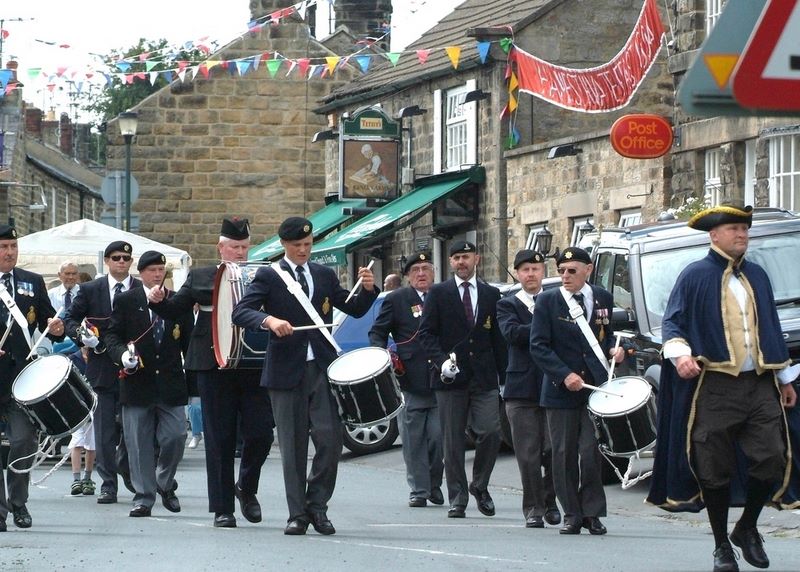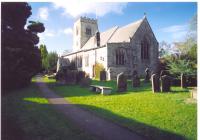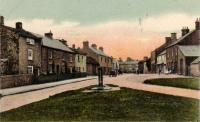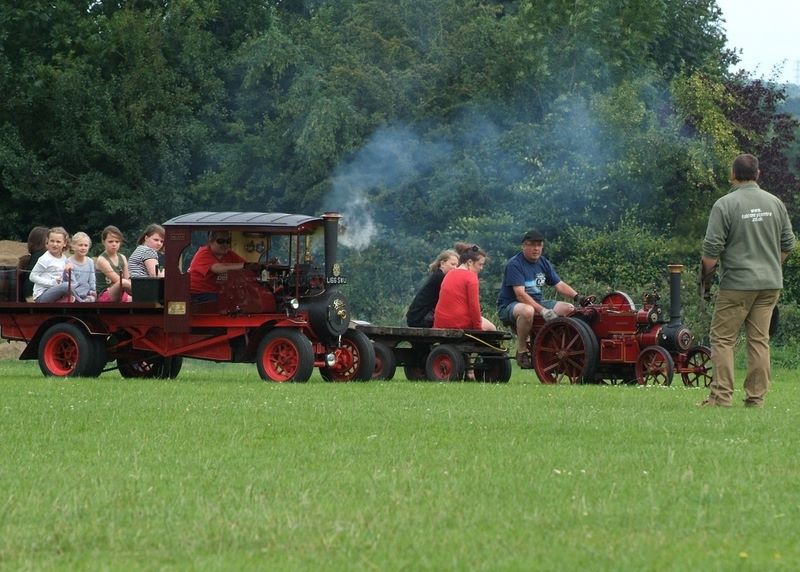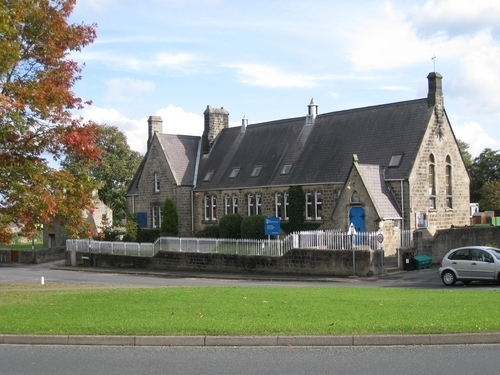Recent articles
© DT Online 2010 - 2025
| Thomas a'Becket WalkThis modern development of 19 houses occupies land which formerly had an agricultural use. In 1924 it was part of 27 acres of such land purchased by Dearlove Addyman and formed part of "Village Farm" which he had occupied as a tenant farmer for some years previously (click here to read about previous owners). Over the years a thriving business of animal slaughter developed on the site and an abattoir stood on part of the land until a few years ago (click here to read about the abattoir). In 1994 the site was sold to Nidderdale Quality Foods Ltd. An application for planning consent to allow the construction of residential property was made in 1997 and refused. A further such application was lodged in August 2000 seeking outline consent for housing construction. The application was made against a background of regular complaints from villagers concerning nuisances of noise, smells, traffic congestion etc. arising from the use of the site. The application drew attention to the fact that, over the years, increasing UK and EEC regulations and the practical problems arising on the site had made difficult the continuing economic viability of the industry while retaining residential amenity. The site was no longer suitable for the business. Discussions had recognised the need to raise capital from residential development to fund the relocation of the business. Changes in the value of the housing market meant that a smaller such development could now finance such a change. It was suggested that the application if granted would result in an enhancement of the Conservation Area. The applicants envisaged the construction of 18 houses of which 3 could be "affordable" properties. The Planning Officer recognised that the proposal might be an acceptable solution to a long standing problem but it soon became clear that a number of issues needed to be resolved. The Environment Agency expressed the view that the proposal might be acceptable provided steps were taken to prevent an increase in the risk of flooding to the site (the site lies in the flood plain of the River Nidd). The Heritage Officer was of the view that an archaeological survey was necessary in view of the historic nature of the area (part of an ancient Roman route). Local residents expressed their own concerns about flooding, increased traffic, loss of a village workplace, undue enlargement of the existing village, types and sizes of dwellings contemplated, etc., etc. The Harrogate Council's file discloses a great deal of correspondence on these matters. The planning application was listed for consideration on 7th December 2000 but on the day before the hearing an objection was received from the Environment Agency citing renewed concerns about flood risks. Although the applicants had been led to believe that the risk was low, heavy rains in the proceeding days had resulted in the site being flooded! The application was deferred for further investigation. A solution was proposed involving raising the ground height of the dwellings and the creation of a large excavated "compensation area" between the position of any housing and the river. Next month the application was, on the recommendation of the planning officer, again deferred but on the basis that the Head of Planning Services was authorised to approve the application subject to numerous conditions designed to meet all the concerns identified including arrangements for securing the future maintenance of the compensation area. Much work was obviously done thereafter to meet the conditions and, on the 24th April 2002, an application for full planning consent was lodged by new owners and proposed builders Charles Church North East of Newton Aycliffe Co. Durham. The architects for the project were Carey Nieman of Leeds. The application was accompanied by a detailed contextual study undertaken to identify the design characteristics, spatial qualities and built form of Hampsthwaite village. Nevertheless, the application provoked renewed concerns as to the need for a clearer scheme for landscaping, flood protection measures, surface water disposal, the high value and number of dwellings proposed, the intrusive nature of the envisaged housing in the landscape, etc., etc. The County Council reported on its archaeological evaluation saying that the remains of medieval open field systems formed part of the historic landscape around the village; there were earthwork remains of ridge and furrow and an earthwork bank might possibly follow that of the projected course of the Roman road. The report concluded that "the preservation in situ of these remains is the preferred option" and that building plot 19 "will directly affect these earthworks". In June 2002 the Parish council reported on the result of a public meeting held the previous week and identified the concerns of the villagers then expressed (which had repeated many known objections and added comments about preserving an ancient 300 year-old Hawthorn hedge and a large Sycamore tree on the site) and added its own comments about the need to manage flood/drainage problems. The Conservation Officer did not support the application and made a number of detailed criticisms of the proposed design. The Environmental Health Officer and Yorkshire Water reiterated earlier concerns about potential nuisance from increased use of the nearby sewage pumping station. By October it was apparent to the developers that outstanding issues would not be resolved in time for the intended meeting of the planning committee in November. Eventually, in February 2003 the planning committee authorised the Head of Planning Services to approve the application subject to 33 conditions suggested by the planning officer and, after more detailed negotiations, those conditions were deemed to be met with the result that the house we see today were constructed. Since the construction of the estate a review of the Conservation Area has been carried out by the Council which comments . . . "There is a new housing expansion in St Thomas a Becket Walk of mainly detached houses on the site of a former cattle slaughterhouse. Whilst the houses have been constructed in stone, along the river valley, once they have aged and weathered should eventually merge into the landscape. However, they would, in the meantime, benefit from further screening with additional tree planting..". Click here to go to the interactive map where you may click on individual properties to reveal photos of them. |






